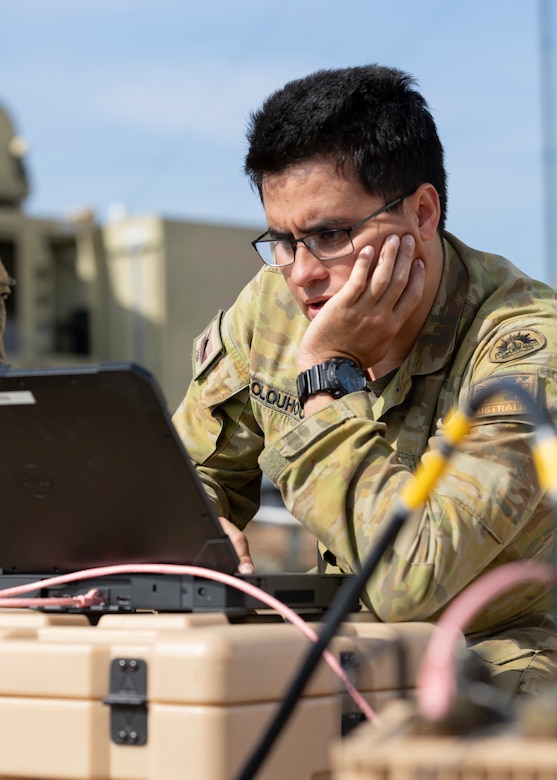More than 4,000 U.S. service members, military civilians, and other joint and multinational force members have joined together to experiment warfighting communications, operations and maneuvers will occur in the future.
Project Convergence Capstone 4, led by U.S. Army Futures Command, integrates an extensive communications network to relay information between different levels of experimentation effectively.
This experiment will inform the integration of modern capabilities and networks to accelerate data exchanges and achieve decision superiority.
“The network has to be the No. 1 priority,” Chief of Staff of the Army Gen. Randy George said at an Army transformation event earlier this month. “You cannot communicate, you cannot command and control, everything we do across our warfighting functions depends on our network.”
“The Project Convergence network architecture is a mixture of currently fielded communications equipment and cutting-edge experimental technology, and incorporates systems from the Army, joint services and multinational partners,” said Chief Warrant Officer 5 Jeramy Cosner, the chief technology officer of AFC’s Network Cross-Functional Team, one of the organizations participating in Project Convergence Capstone 4. “The Army, joint and coalition partners are using these systems to exchange message types and data to enable significantly greater collaboration at speed.”
The mission scenarios taking place as part of Capstone 4 are designed to help the military identify challenges and opportunities to improve integration of new technologies and tactics. For example, participants are currently experimenting with software capabilities that enable greater connectivity, faster correlation of mission data, improved alignment of fires and intelligence and a more user-friendly interface.
“Many of the experiment participants are using commercial network communications methods,” Cosner said. “We are monitoring closely to provide relevant feedback to Army senior leaders, as well as the requirements and acquisition communities.”
Communicating in contested and remote environments is an ongoing challenge. PC-C4 allows opportunities to make the network more robust by integrating lightweight software, leveraging state-of-the-art networking protocols and improving interoperability hubs. Doing all that with multinational partners, and making sure everyone can communicate effectively, is an important mission, said British Lt. Col. Mark Foote, an interoperability officer participating in Capstone 4.
“By successfully establishing transport and network connectivity with the multinational partners, we have made significant progress toward a reliable mission partner network,” Foote said. “That network underpins the passage of data for a coalition common operational picture and integrated fires — key to optimizing the sensor-decider-effector chain.”
PC-C4 continues to build upon the progress made during Project Convergence 22 and persistent experimentation events of the past year by enabling data sharing, operational synchronization and integration across joint and multinational partners. They will provide the foundation to converge effects rapidly and continuously across all domains.
“The Chief of Staff of the Army is driving us to provide leaders what they need on the changing battlefield — network and command and control systems that are simple, mobile, low signature and adaptable,” Cosner said. “Project Convergence helps us figure out what is possible to get there.”









